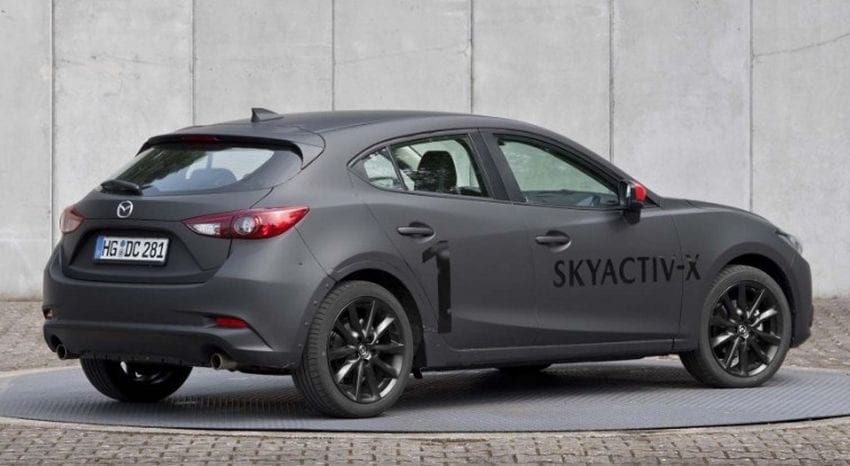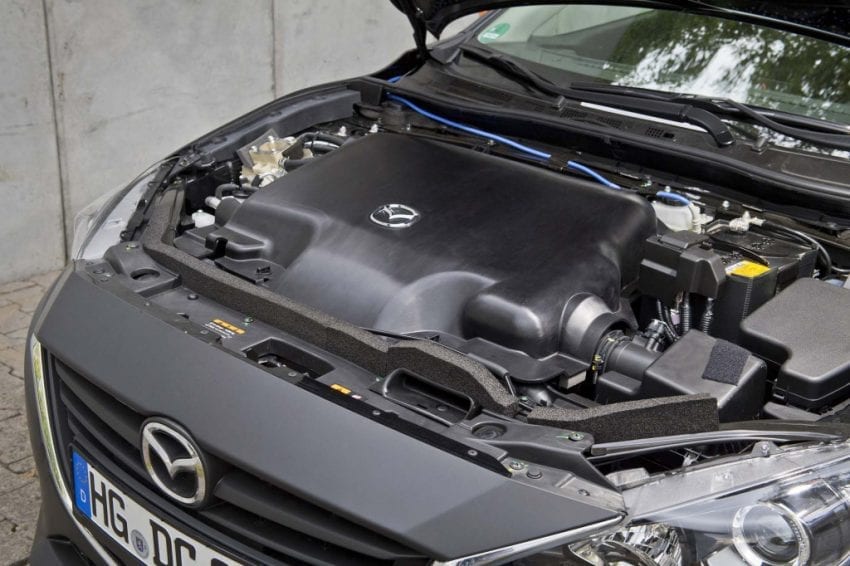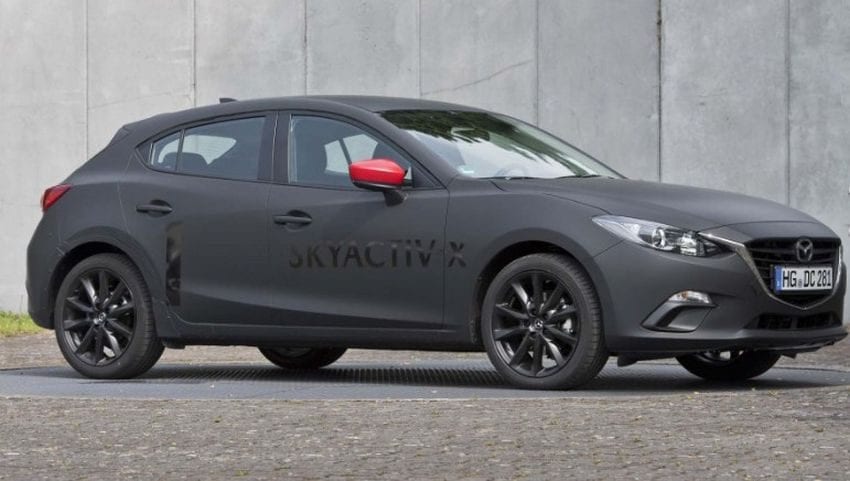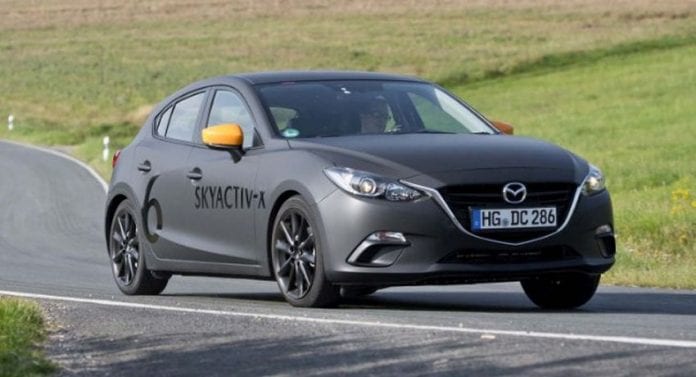At the end of the last month, Mazda has had six next-gen 2024 Mazda 3 hatchback prototypes all over the world testing, and each of them was a hand-built based on the new chassis and packed a radical new 2.0-liter engine. Even though the prototypes are here, the design of the new model has remained hidden, and it won’t be revealed until 2019.
The vehicles which are tested include one Mazda 3 with a six-speed manual gearbox and the other with a six-speed automatic. These models are typical prototypes with the flat-back body wrap, bolts holding parts of the bodywork on and a re-engineered gas door in an inset metal panel. You could tell the difference between prototypes by looking at differently colored door mirrors and a large number on the door. Under the hood, the engine is concealed behind a large black plastic shroud whereas plenty of zip ties show us the development stage in which the new Mazda 6 is.

SkyActiv-X Engine
The unit that will power the 2020 Mazda 3 is a 2.0-liter SkyActiv-X, and it will be more efficient than its predecessor. The Japanese carmaker could produce a powerplant which uses a principle of homogeneous charge compression ignition also known as HCCI, and this has been the ultimate goal for the engine designers for decades.
The new 2.0-liter SkyActiv X evolved from the SkyActiv-G which was first offered in 2012 models. That unit had the highest compression ratio of any gasoline engine (14 to 1) and consumed about 20% less fuel than engines of similar power. The new SkyActiv X raises the ratio to 15 or 16 to 1 which might permit a lean gasoline-air mixture to combust under compression alone.

Spark Ignition
Mazda calls its technology Spark-Controlled Combustion Ignition. A minimal amount of gas-air mixture, which is injected close to the spark is ignited. It raises the pressure on the much larger volume of lean gas-air mixture in the rest of the combustion chamber which creates high and efficient compression ratio causing the mixture to ignite spontaneously. The company has managed to boost pressure to achieve the HCCI without adding mechanical means which were used by the other carmakers
Only three parts of the 2.0-liter SkyActiv X are actually new; high-pressure fuel system which injects fuel into cylinders with higher compression ratios, a “high-response air supply” which is powered by a compressor (It is not a supercharger) and which increases the volume of air in the combustion chamber and the latest generation of in-cylinder sensors.
Bear in mind that these are still development units and they will not arrive in the next two years. Nevertheless, the prototypes which were driven were remarkably composed. There are a few inconsistencies in response, but the car is still in the early stage of development. The new powerplant felt stronger than the ongoing 2.0-liter SkyActiv-G, and it was nicely paired with its manual and automatic transmissions.

Fun Drive
The Japanese manufacturer has come up with the entirely new seat frames, while the position of the seat and steering wheel is going to center the driver in an optimal position, thus eliminating the slightly off-center position found in some less driver-oriented models. With the speeds of about 100 mph on the autobahn section, the 2024 Mazda 3 prototype recorder 34.6 mpg in manual and 39.9 mpg in the automatic version. The car behaved well in corners, and it delivered excellent feedback through the power steering.
Conclusion
This was just a glimpse of the new 2020 Mazda 3 that comes with new SkyActiv X technology, which is going to become more popular in the future. The Japanese carmaker considered it to be too early to mention the models which will get the new engine.
The most likely outcome for the CX-5, for instance, could be the ongoing SkyActiv-G in the base trim, SkyActiv X in the mid-level option and fuel-efficient diesel in the top trim. The good news is that Mazda is diligently working on production models which are rewarding to drive and new engine technologies which might be used by the other carmakers in the future.









